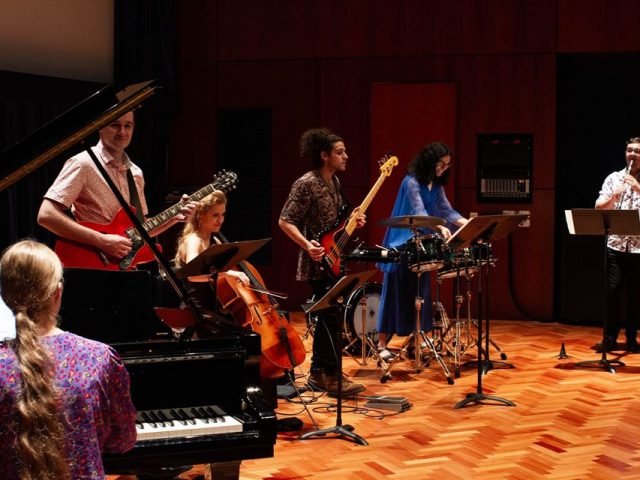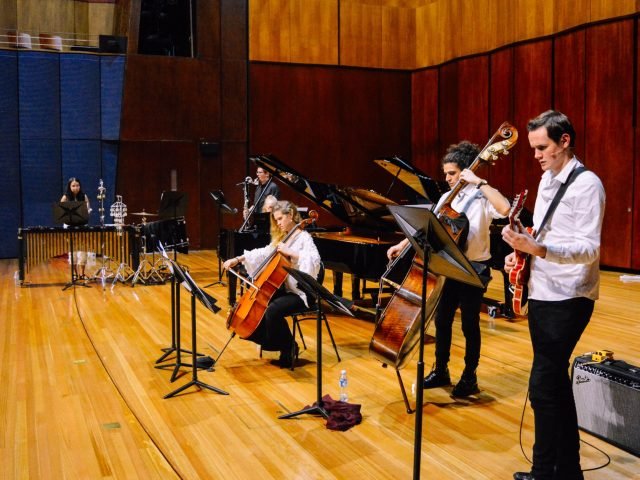Program Notes
Get immersed in the music
Dawn Prelude
In the still moments before dawn in suburban Canberra, scores of birds slowly awaken. The magpies call to one another in their characteristic voice as the finches interject to finish their sentences, escalating to vibrant cacophony as first light breaks. Prelude draws on this rich soundscape as basis for its musical material, and situates violin, double bass and percussion in a similar realm of interaction and conversation. Dialogues between musicians emerge and disperse through structured improvisation beneath a partial canopy of modal fragments, gently rustling textures and tumbling rhythms – a score to herald a new day.
Instinct
With ‘Instinct’ I wanted to go back to a more primal music with the use of contemporary instruments.



